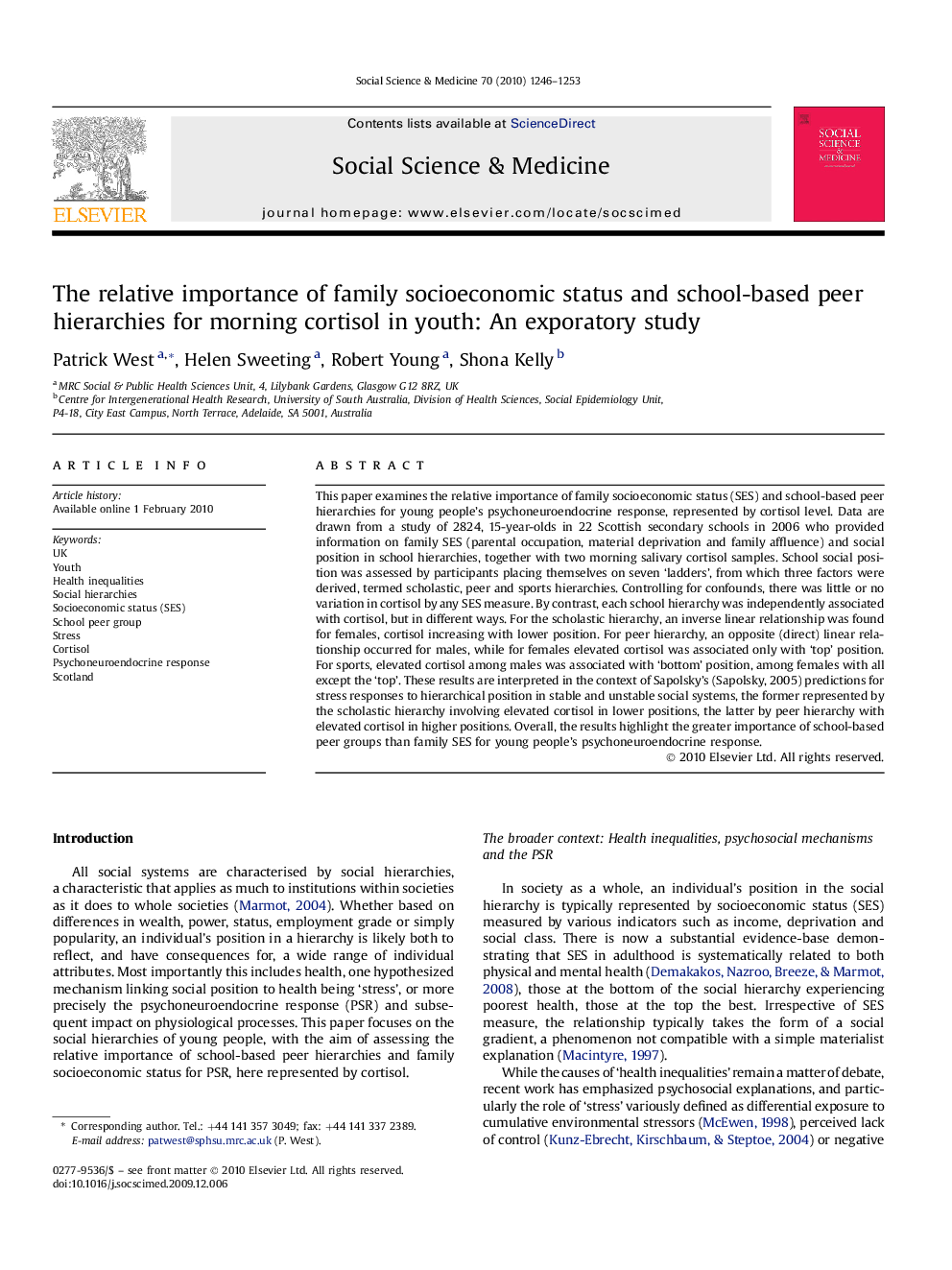| کد مقاله | کد نشریه | سال انتشار | مقاله انگلیسی | نسخه تمام متن |
|---|---|---|---|---|
| 10472039 | 927571 | 2010 | 8 صفحه PDF | دانلود رایگان |
عنوان انگلیسی مقاله ISI
The relative importance of family socioeconomic status and school-based peer hierarchies for morning cortisol in youth: An exporatory study
دانلود مقاله + سفارش ترجمه
دانلود مقاله ISI انگلیسی
رایگان برای ایرانیان
کلمات کلیدی
موضوعات مرتبط
علوم پزشکی و سلامت
پزشکی و دندانپزشکی
سیاست های بهداشت و سلامت عمومی
پیش نمایش صفحه اول مقاله

چکیده انگلیسی
This paper examines the relative importance of family socioeconomic status (SES) and school-based peer hierarchies for young people's psychoneuroendocrine response, represented by cortisol level. Data are drawn from a study of 2824, 15-year-olds in 22 Scottish secondary schools in 2006 who provided information on family SES (parental occupation, material deprivation and family affluence) and social position in school hierarchies, together with two morning salivary cortisol samples. School social position was assessed by participants placing themselves on seven 'ladders', from which three factors were derived, termed scholastic, peer and sports hierarchies. Controlling for confounds, there was little or no variation in cortisol by any SES measure. By contrast, each school hierarchy was independently associated with cortisol, but in different ways. For the scholastic hierarchy, an inverse linear relationship was found for females, cortisol increasing with lower position. For peer hierarchy, an opposite (direct) linear relationship occurred for males, while for females elevated cortisol was associated only with 'top' position. For sports, elevated cortisol among males was associated with 'bottom' position, among females with all except the 'top'. These results are interpreted in the context of Sapolsky's (Sapolsky, 2005) predictions for stress responses to hierarchical position in stable and unstable social systems, the former represented by the scholastic hierarchy involving elevated cortisol in lower positions, the latter by peer hierarchy with elevated cortisol in higher positions. Overall, the results highlight the greater importance of school-based peer groups than family SES for young people's psychoneuroendocrine response.
ناشر
Database: Elsevier - ScienceDirect (ساینس دایرکت)
Journal: Social Science & Medicine - Volume 70, Issue 8, April 2010, Pages 1246-1253
Journal: Social Science & Medicine - Volume 70, Issue 8, April 2010, Pages 1246-1253
نویسندگان
Patrick West, Helen Sweeting, Robert Young, Shona Kelly,